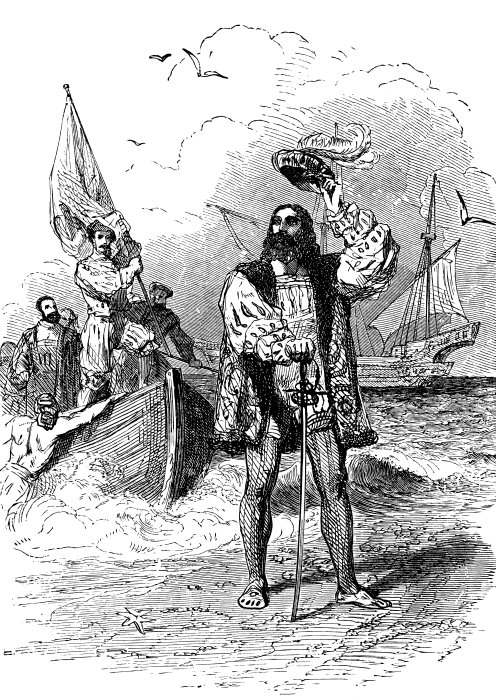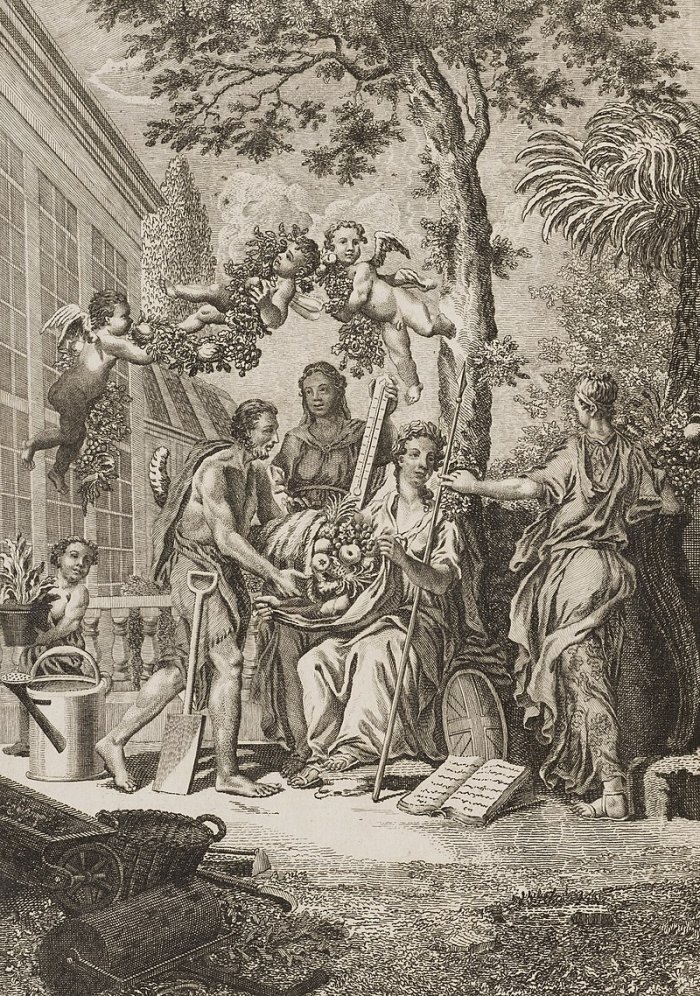Conny Waters – AncientPages.com – In modern times, pineapple is a common fruit easily found in any grocery store. However, did you know that this tropical fruit was once regarded as a symbol of wealth and status? Centuries ago, possessing a pineapple indicated affluence due to its rarity. The pineapple, cultivated for centuries, is originally a tropical plant native to South America.
Columbus’s “Discovery” Of The Pineapple
During his second voyage to the New World on November 4, 1493, Christopher Columbus came ashore “on the newly sighted Caribbean island he had just named Santa Maria de Guadelope, and promptly “discovered” the pineapple (Ananas comosus).” 1

Christopher Columbus and his men had never seen the pineapple before. Credit: Adobe Stock – Tony Baggett
He named the fruit “pina” due to its resemblance to a pinecone.
Columbus and his men were skeptical and cautious when the Native Americans approached them in their canoes, bringing fresh water and food to trade.
At first, the men were hesitant because they thought the local food could potentially cause illness or even death. However, they found the pineapple to be appealing.
“It was soon realized that the first fruits found on Guadelope had been of the small, wild sort, but there were larger cultivated pineapples that were even more delicious.
The Tupinambá people ate pineapple fresh, roasted it over the fire, dried it and made wine from it. As well as using pineapple as food, they employed it as a medicine, made fibres from netting and plaiting from leaves, and used it to make poison for their arrowheads. By the time Columbus arrived in the New World, Native American activity over many centuries had spread the pineapple to present-day Brazil, Guiana, Colombia, parts of Central America, and the West Indies.

You had to be very wealthy just to get one pineapple! Credit: Adobe Stock – amawasri
Because native methods of cultivation appeared haphazard and even invisible to Europeans, the skill the Native Americans had invested in developing different pineapple species was not appreciated. Instead, the pineapple species was regarded by the newcomers as the gift of bounteous nature, the benefaction of a divine providence.” 1
To Columbus and his followers, the pineapple “became the very symbol of all that was wondrous, exotic and desirable, the very king of fruits”. 1
Numerous adventurers have expressed deep appreciation for the fruit, portraying it in the most vibrant and vivid descriptions.
“The Venetian Antonio Pigafetta, who sailed around the world with Magellan, noted that “In truth it is the most delicious fruit that can be found… more delicious than any apple sugared.”
According to the French explorer Jean de Léry, “the gods might luxuriate upon it and should only be gathered by the hand of a Venus,” while Sir Walter Raleigh wrote that: “The Spaniards swear that the Pinas of Guiana was the apple that Eve tempted Adam with: but it is true that no man can express in words the excellence of that fruit, so far does it exceed all others.” 1
The pineapple appears in myths and legends as an appreciated fruit. The cornucopia is a hollow horn-shaped container often depicted in paintings and on friezes filled with abundant fruit, coins, flowers, grain, nuts, or any other desirable things. The pineapple was often placed in the cornucopia.

Britannia presented with a cornucopia, including pineapples. Credit: Wikipedia – CC BY 4.0
Upon his return to Europe, Columbus brought several items, including tame parrots, tomatoes, tobacco, pumpkins, and a few pineapples. This exotic fruit quickly became popular in Europe. However, due to the lengthy voyage across the Atlantic and lack of cold storage facilities on board his ship, many of these pineapples unfortunately deteriorated.
Therefore, pineapples were only available in small quanties and only the rich could afford this delicious, exotic fruit. “Being seen with a pineapple was an immediate indication of wealth – in the 1700s, it is estimated that the cost of a single pineapple in today’s money would be around $8,000.
Pineapples Could Be Rented
Pineapple owners were actually reluctant to eat them because it would mean giving up this status symbol. Instead, they were used as a centerpiece on the banquet table or as a work of art on a shelf. It was only when they started to go rotten that they would actually be eaten.
Poorer people who wanted to make their friends jealous of their extravagance could rent one for the night when they were having a dinner party from one of the many “pineapple rental” shops. 2
Over time, the symbolism ᴀssociated with the pineapple changed, and the fruit became an emblem of hospitality and generosity.
In the Victorian era, the advent of steamships enabled faster oceanic crossings, leading to the mᴀss importation of pineapples. As a result, pineapples became available to all social classes, diminishing their previous status as a symbol of wealth.
The next time you stroll through the grocery store and spot a pineapple, take a moment to appreciate it. You are gazing at a fruit that was once considered an exclusive luxury, affordable only to a select few.
Written by Conny Waters – AncientPages.com Staff Writer
Copyright © AncientPages.com All rights reserved. This material may not be published, broadcast, rewritten or redistributed in whole or part without the express written permission of AncientPages.com
Expand for references
- O’Connor, Kaori – Pineapple: A Global History
- Bobbie Oakey – Fascinating Stories for Curious Minds: Unbelievable True Tales Across Science, History, Space, Pop Culture, the Natural World and Beyond
- A. Sutherland – Cornucopia – ‘Horn Of Plenty’ – Ancient Symbol And Its Almost Forgotten Meaning – AncientPages.com





